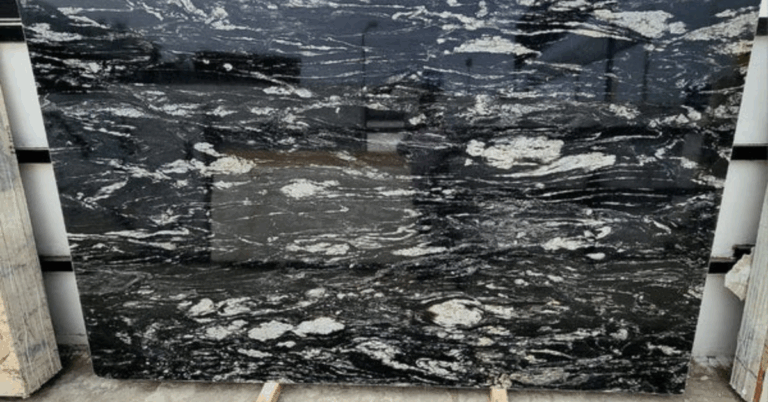Formaldehyde Remover: The Ultimate Solution for Cleaner, Safer Spaces
Formaldehyde is a common indoor air pollutant that can pose significant health risks when present in high concentrations. It is a colorless gas with a strong, pungent odor, and it is frequently found in building materials, furniture, and various household products. While it may not always be visible, formaldehyde can have long-term effects on your health, ranging from irritation to serious conditions such as respiratory issues and cancer.
Thankfully, Formaldehyde Remover offer an effective solution to reduce its concentration in your living and working spaces. In this article, we will delve deep into formaldehyde, its sources, the health risks it presents, and how formaldehyde removers work to keep your environment safe. Additionally, we will address frequently asked questions (FAQs) to provide you with comprehensive information on formaldehyde removal.
What Is Formaldehyde?
Formaldehyde is a chemical compound with the formula CH₂O. It is a colorless, flammable gas at room temperature and has a distinctive, strong odor. Commonly used in the production of plastics, resins, textiles, and building materials, formaldehyde is also found in tobacco smoke, vehicle exhaust, and even some household products like disinfectants and air fresheners.
The substance is known for its role in preserving biological specimens, hence the name “formalin,” which refers to an aqueous solution of formaldehyde. However, its widespread use in everyday products has raised concerns regarding its presence in indoor air, particularly in newly constructed or renovated homes.
Common Sources of Formaldehyde
Formaldehyde can be emitted from a wide range of products and materials found in homes and offices. Here are some common sources:
-
Building Materials: Plywood, particleboard, and fiberboard used in flooring, walls, and furniture often contain formaldehyde-based adhesives.
-
Furniture and Upholstery: Some types of furniture, particularly those with pressed wood components, may emit formaldehyde over time.
-
Cleaning and Household Products: Certain air fresheners, disinfectants, and cleaning agents contain formaldehyde or release it as a byproduct.
-
Textiles: Fabrics used in upholstery, curtains, and clothing may be treated with formaldehyde-based chemicals to resist wrinkles and stains.
-
Tobacco Smoke: Cigarette and cigar smoke are known to release formaldehyde, along with other harmful chemicals.
The Health Risks of Formaldehyde Exposure
Exposure to formaldehyde, even in small amounts, can lead to a variety of health issues. The severity of these health risks depends on the concentration of formaldehyde and the duration of exposure. Here are some of the most common health problems linked to formaldehyde:
-
Short-Term Effects:
-
Eye, Nose, and Throat Irritation: Formaldehyde exposure can lead to irritation of the eyes, nose, and throat, causing symptoms like burning, itching, and redness.
-
Coughing and Wheezing: Inhalation of formaldehyde can cause coughing, wheezing, and a sore throat, especially in individuals with preexisting respiratory conditions.
-
Headaches and Fatigue: Prolonged exposure to formaldehyde may also lead to headaches, dizziness, and general fatigue.
-
-
Long-Term Effects:
-
Respiratory Problems: Chronic exposure to formaldehyde may lead to long-term respiratory issues such as asthma, bronchitis, or other pulmonary diseases.
-
Cancer: Formaldehyde has been classified as a human carcinogen by several health agencies, including the International Agency for Research on Cancer (IARC). Long-term exposure to formaldehyde has been linked to cancers of the nose, throat, and lungs.
-
-
Sensitive Individuals: Children, the elderly, and individuals with respiratory conditions like asthma or COPD (chronic obstructive pulmonary disease) are particularly vulnerable to the adverse effects of formaldehyde exposure.
How Formaldehyde Removers Work
Formaldehyde removers are products specifically designed to reduce or eliminate formaldehyde concentrations in indoor spaces. These removers work in several ways, depending on their chemical composition and delivery methods. Below are some common techniques used by formaldehyde removers:
-
Adsorption: Some formaldehyde removers contain materials that can adsorb formaldehyde molecules. Activated carbon, zeolite, and other porous substances can trap and hold formaldehyde, preventing it from circulating in the air.
-
Chemical Neutralization: Certain formaldehyde removers use chemicals that neutralize formaldehyde. These products typically work by converting formaldehyde into a less harmful substance that can be safely removed from the air.
-
Ozone Generation: Some air purifiers and formaldehyde removers use ozone generators to break down formaldehyde molecules. While ozone is effective in eliminating formaldehyde, it must be used with caution because ozone itself can irritate the respiratory system.
-
Photocatalytic Oxidation (PCO): This technology uses light to activate a catalyst that breaks down formaldehyde molecules. The process converts formaldehyde into harmless substances such as water and carbon dioxide.
-
Air Purifiers: Many formaldehyde removers come in the form of air purifiers equipped with HEPA filters or activated carbon filters. These devices help trap formaldehyde and other volatile organic compounds (VOCs), improving air quality.
Benefits of Using Formaldehyde Removers
Using formaldehyde removers has several benefits, especially for households and workplaces with high levels of formaldehyde. Here are some key advantages:
-
Improved Indoor Air Quality: Formaldehyde removers effectively reduce the concentration of formaldehyde and other harmful chemicals, resulting in cleaner, safer indoor air.
-
Health Benefits: By removing formaldehyde, these products help reduce the risk of respiratory problems, headaches, and other health issues associated with exposure to formaldehyde.
-
Long-Term Protection: Many formaldehyde removers provide long-lasting protection against the buildup of formaldehyde, ensuring that your living or working environment remains safe over time.
-
Easy to Use: Most formaldehyde removers are easy to implement, whether in the form of air purifiers, sprays, or passive absorption materials. This makes it simple to improve air quality without much effort.
How to Use Formaldehyde Removers
Using formaldehyde removers is relatively straightforward, but it’s important to follow the manufacturer’s instructions to ensure optimal results. Below are some general guidelines for using these products:
-
Air Purifiers: Place air purifiers equipped with formaldehyde-removal technology in areas with high levels of formaldehyde. Ensure that the purifier’s filter is replaced regularly to maintain its efficiency.
-
Sprays and Gels: Some formaldehyde removers come in the form of sprays or gels. Apply these products directly to surfaces that may be releasing formaldehyde, such as furniture, textiles, and flooring. Be sure to allow the product to dry completely before using the affected areas.
-
Activated Carbon Bags: Activated carbon bags can be placed in areas where formaldehyde is present. These bags slowly absorb formaldehyde from the air, providing a passive and ongoing solution to improve air quality.
-
Ozone Generators: If using an ozone generator, ensure that the room is unoccupied during the treatment. Ozone can irritate the respiratory system, so it is important to ventilate the area thoroughly after using this type of formaldehyde remover.
Frequently Asked Questions (FAQs)
Q1: How can I tell if my home has high levels of formaldehyde?
A1: Signs of formaldehyde exposure may include persistent respiratory symptoms such as coughing, throat irritation, and eye discomfort. You can also use formaldehyde detectors, which are available in the market, to measure the concentration of formaldehyde in your home.
Q2: Are formaldehyde removers safe to use around pets and children?
A2: Most formaldehyde removers are designed to be safe for pets and children, but it is always important to check the manufacturer’s recommendations. When using any formaldehyde-removal product, ensure that the area is well-ventilated and avoid direct contact with the remover.
Q3: How long does it take for a formaldehyde remover to work?
A3: The time required for formaldehyde removal depends on the type of product and the level of formaldehyde in the area. Some products provide immediate relief, while others may take several hours or days to show noticeable results.
Q4: Can I completely eliminate formaldehyde from my home?
A4: While formaldehyde removers can significantly reduce the concentration of formaldehyde in your home, it may be difficult to completely eliminate it. However, regular use of formaldehyde removers and proper ventilation can keep formaldehyde levels to a minimum.
Q5: How can I prevent formaldehyde buildup in my home?
A5: To prevent formaldehyde buildup, choose low-emission furniture and building materials, avoid smoking indoors, and ensure proper ventilation in your home. Regular cleaning and using air purifiers can also help reduce formaldehyde levels.
Conclusion
Formaldehyde is a serious health concern, but with the right formaldehyde remover, you can ensure that your indoor air remains safe and healthy. Whether through adsorptive materials, chemical neutralization, or air purifiers, formaldehyde removers can effectively reduce the harmful effects of this chemical. By taking proactive steps to remove formaldehyde and improve indoor air quality, you are safeguarding the health and well-being of everyone in your home or workplace.
Remember to always follow the instructions provided with any formaldehyde remover and use proper ventilation for optimal results.







